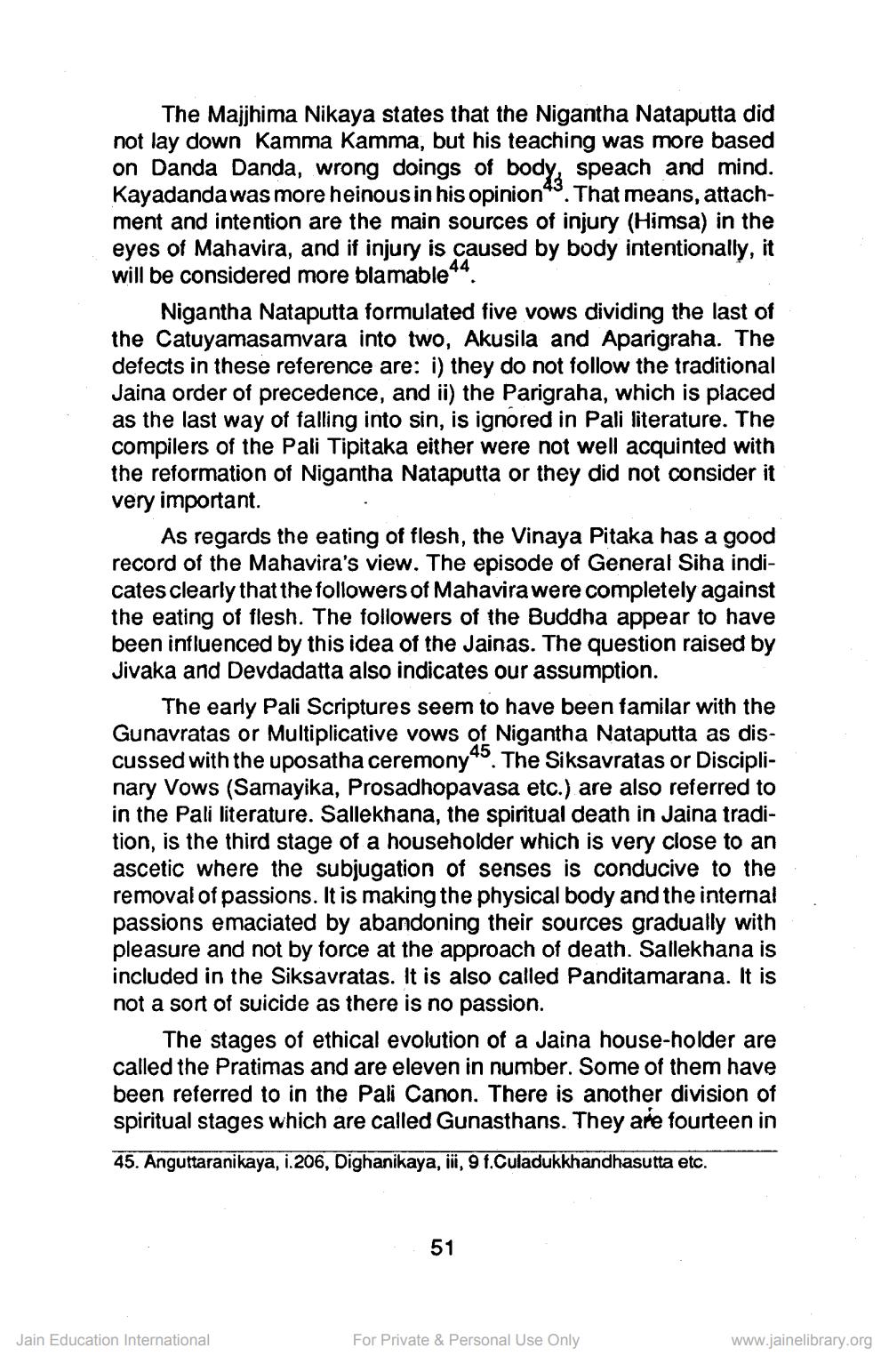________________
The Majjhima Nikaya states that the Nigantha Nataputta did not lay down Kamma Kamma, but his teaching was more based on Danda Danda, wrong doings of body, speach and mind. Kayadanda was more heinous in his opinion. That means, attachment and intention are the main sources of injury (Himsa) in the eyes of Mahavira, and if injury is caused by body intentionally, it will be considered more blamable44.
Nigantha Nataputta formulated five vows dividing the last of the Catuyamasamvara into two, Akusila and Aparigraha. The defects in these reference are: i) they do not follow the traditional Jaina order of precedence, and ii) the Parigraha, which is placed as the last way of falling into sin, is ignored in Pali literature. The compilers of the Pali Tipitaka either were not well acquinted with the reformation of Nigantha Nataputta or they did not consider it very important.
As regards the eating of flesh, the Vinaya Pitaka has a good record of the Mahavira's view. The episode of General Siha indicates clearly that the followers of Mahavira were completely against the eating of flesh. The followers of the Buddha appear to have been influenced by this idea of the Jainas. The question raised by Jivaka and Devdadatta also indicates our assumption.
The early Pali Scriptures seem to have been familar with the Gunavratas or Multiplicative vows of Nigantha Nataputta as discussed with the uposatha ceremony. The Siksavratas or Disciplinary Vows (Samayika, Prosadhopavasa etc.) are also referred to in the Pali literature. Sallekhana, the spiritual death in Jaina tradition, is the third stage of a householder which is very close to an ascetic where the subjugation of senses is conducive to the removal of passions. It is making the physical body and the internal passions emaciated by abandoning their sources gradually with pleasure and not by force at the approach of death. Sallekhana is included in the Siksavratas. It is also called Panditamarana. It is not a sort of suicide as there is no passion.
The stages of ethical evolution of a Jaina house-holder are called the Pratimas and are eleven in number. Some of them have been referred to in the Pali Canon. There is another division of spiritual stages which are called Gunasthans. They are fourteen in
45. Anguttaranikaya, 1.206, Dighanikaya, iii, 9 f.Culadukkhandhasutta etc.
51
Jain Education International
For Private & Personal Use Only
www.jainelibrary.org




